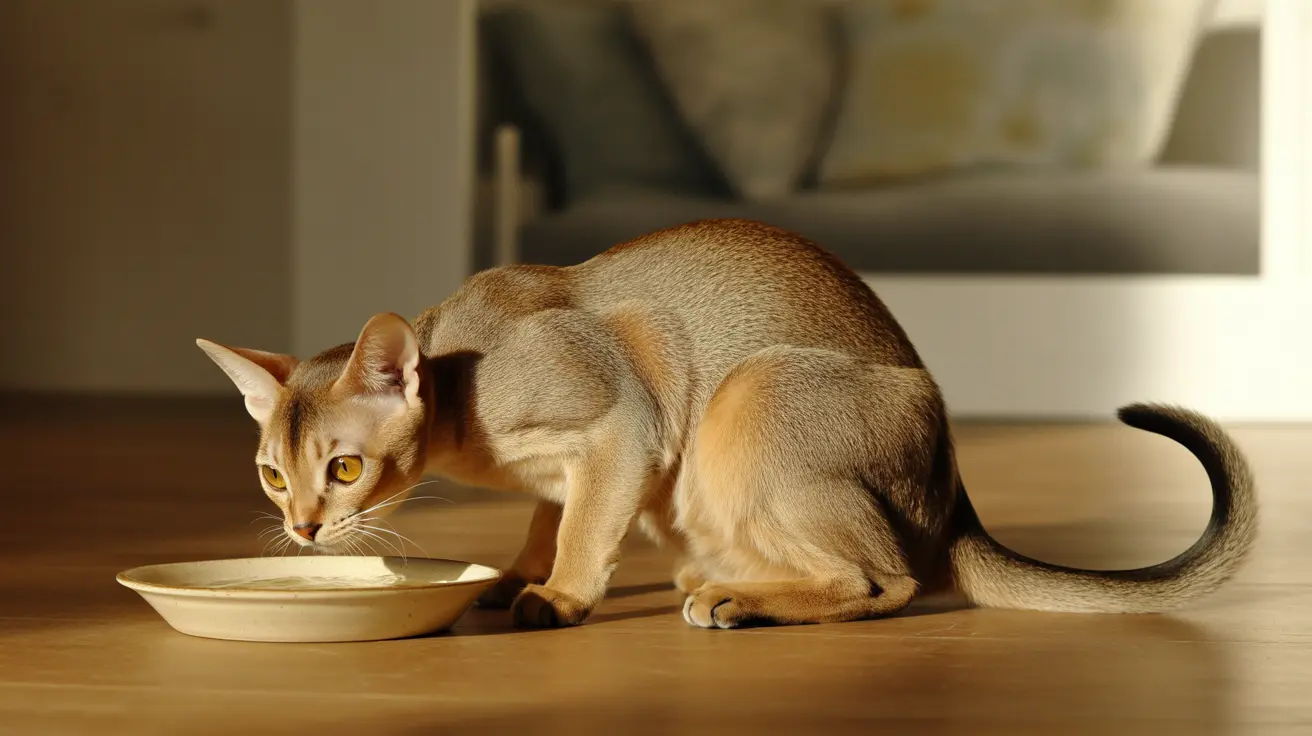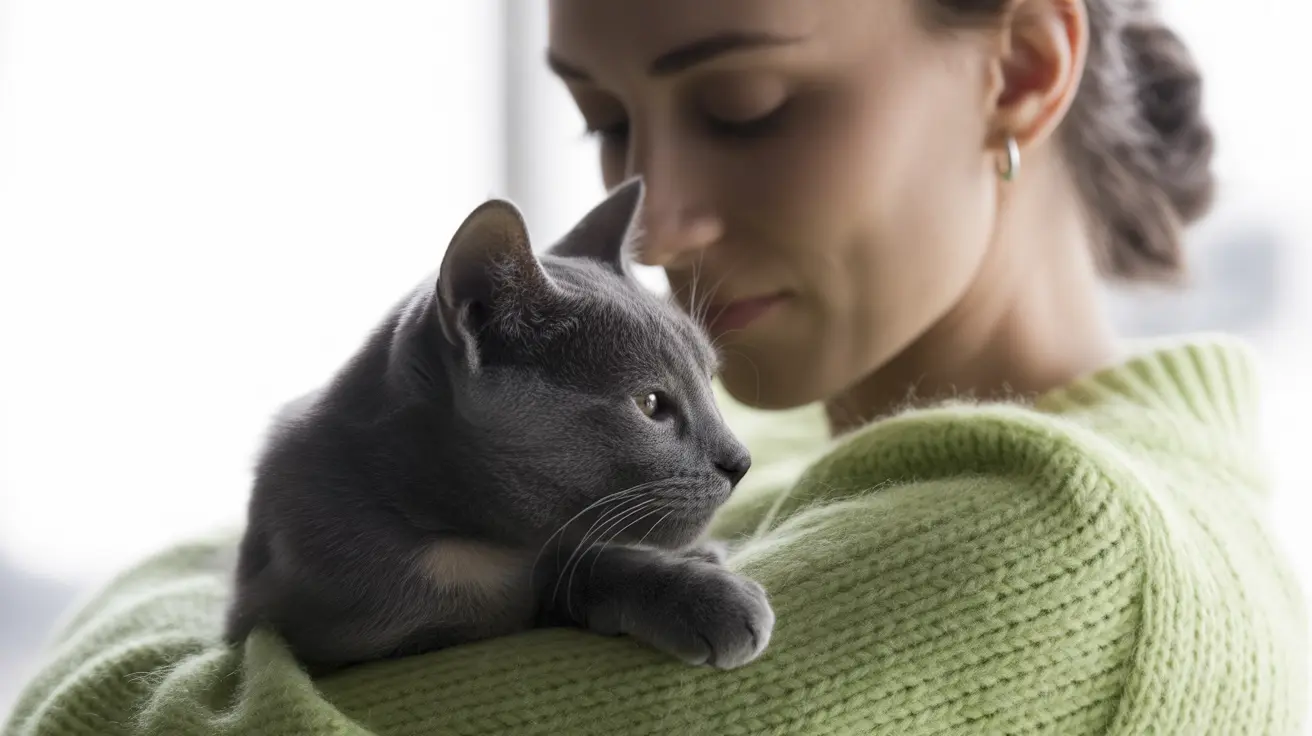Understanding Chronic Kidney Disease in Cats: A Complete Guide to Recognition, Stages, and Management
Chronic kidney disease (CKD) stands as one of the most prevalent health conditions affecting our feline companions, particularly as they enter their senior years. This progressive condition represents a gradual decline in kidney function that, while incurable, can be effectively managed with proper understanding and veterinary care. For cat owners, especially those with aging pets, recognizing the subtle signs and understanding the progression of chronic kidney disease in cats is crucial for ensuring the best possible quality of life for their beloved companions.
The kidneys serve as vital filtration systems in your cat's body, responsible for removing waste products from the blood, creating urine, maintaining proper blood pressure, and regulating essential minerals and electrolytes. When chronic kidney disease develops, these functions gradually deteriorate over time, leading to a cascade of health complications that can significantly impact your cat's well-being. What makes this condition particularly challenging is that early stages often present with minimal or no visible symptoms, as the body remarkably compensates for diminished kidney function until approximately two-thirds of the kidney tissue is compromised.
Understanding chronic kidney disease in cats becomes even more critical when considering the statistics: this condition affects a substantial percentage of cats over the age of 10, with even higher prevalence in cats over 15 years old. Age serves as the primary risk factor, though certain breeds including Maine Coons, Abyssinians, Siamese, Russian Blues, and Burmese show increased predisposition to developing this condition.
The Fundamentals of Chronic Kidney Disease in Cats
Chronic kidney disease in cats involves the progressive loss of functional kidney tissue over time, often resulting from chronic inflammation of unknown origin. This process leads to the replacement of healthy kidney tissue with non-functional connective tissue, gradually reducing the kidneys' ability to perform their essential functions. The condition is characterized by tubulointerstitial fibrosis, involving inflammation, myofibroblast activation, and oxidative stress that perpetuates the disease process.
The pathophysiology of CKD involves the activation of the renin-angiotensin-aldosterone system (RAAS), which contributes to disease progression. This complex biochemical cascade not only affects kidney function but also leads to systemic complications including hypertension and proteinuria. Both kidneys must be significantly affected before clinical symptoms become apparent, highlighting the kidney's remarkable reserve capacity and explaining why early detection can be challenging.
Risk Factors and Underlying Causes
While age remains the most significant risk factor for developing chronic kidney disease in cats, several underlying causes and conditions can contribute to its development. These include congenital diseases such as polycystic kidney disease, which is particularly common in Persian cats, and various acquired conditions throughout a cat's lifetime.
Infectious causes can include pyelonephritis and viral infections such as feline leukemia virus and feline infectious peritonitis. Immune-mediated diseases like glomerulonephritis, kidney tumors including lymphoma, and amyloidosis also contribute to CKD development. Environmental factors such as exposure to toxins, nephrotoxic drugs, and the presence of kidney or ureteral stones can accelerate kidney damage. However, many cases fall under the category of idiopathic tubulointerstitial nephritis, where the exact cause remains unknown.
Recognizing the Signs and Symptoms
The clinical presentation of chronic kidney disease in cats can be deceptively subtle in the early stages, making recognition challenging for even the most attentive pet owners. As kidney function declines, the kidneys lose their ability to concentrate urine effectively, leading to one of the most commonly observed early signs: increased thirst and urination. This compensatory mechanism represents the body's attempt to maintain proper hydration and waste elimination despite compromised kidney function.
As the disease progresses, additional symptoms become more apparent. Weight loss occurs gradually as the cat's appetite diminishes, often accompanied by a deteriorating coat condition that loses its natural luster and softness. The accumulation of waste products in the bloodstream leads to uremia, manifesting as lethargy, general weakness, and behavioral changes that may be mistakenly attributed to normal aging.
Advanced Symptoms and Complications
In more advanced stages, cats may develop gastrointestinal symptoms including vomiting and mouth ulcers, often accompanied by halitosis (bad breath) due to the buildup of uremic toxins. Dehydration becomes more pronounced despite increased water consumption, and some cats may experience diarrhea or constipation as their body struggles to maintain electrolyte balance.
Secondary complications frequently accompany chronic kidney disease in cats, creating additional health challenges. Hypertension (high blood pressure) commonly develops and can lead to serious consequences including acute blindness, neurological signs, and heart complications. Anemia often occurs due to decreased production of erythropoietin, a hormone produced by healthy kidneys that stimulates red blood cell production, resulting in fatigue and weakness that compounds other symptoms.
Understanding the Four Stages of CKD Progression
The International Renal Interest Society (IRIS) has established a comprehensive staging system for chronic kidney disease in cats that helps veterinarians and pet owners understand disease progression and prognosis. This staging system considers multiple factors including creatinine levels, urine protein levels, and blood pressure measurements to provide a complete picture of the cat's condition.
Stage 1 represents the earliest phase where kidney damage may be present but kidney function remains adequate to maintain normal creatinine levels. Cats in this stage typically show no clinical symptoms, making diagnosis challenging without specific screening tests. Stage 2 involves mild kidney dysfunction with slightly elevated creatinine levels but still minimal clinical signs, though subtle changes in drinking and urination patterns may become noticeable to observant owners.
Advanced Stages and Prognosis
Stage 3 chronic kidney disease marks moderate kidney dysfunction where clinical symptoms become more apparent and consistent. Cats in this stage often display the classic signs of increased thirst, urination, weight loss, and decreased appetite. Stage 4 represents severe kidney failure with significant clinical symptoms and multiple complications that substantially impact quality of life and survival expectations.
The prognosis varies significantly depending on the stage at diagnosis, with early detection and intervention dramatically improving survival times and quality of life. Cats diagnosed in early IRIS stages may live for several years with appropriate management, while those in advanced stages often have survival times measured in months. The severity of proteinuria, phosphorus levels, red blood cell counts, and response to treatment all influence individual prognosis.
The Critical Role of SDMA in Early Detection
Symmetric dimethyl arginine (SDMA) has revolutionized the early detection of chronic kidney disease in cats, offering a more sensitive biomarker than traditional kidney function tests. Unlike creatinine, which only becomes elevated after significant kidney damage has occurred, SDMA rises earlier in the disease process when kidney function begins to decline, allowing for earlier intervention and better outcomes.
SDMA testing represents a significant advancement in feline nephrology because it can detect kidney dysfunction when approximately 25-40% of kidney function is lost, compared to creatinine which typically doesn't become elevated until 60-75% of kidney function is compromised. This earlier detection window provides a crucial opportunity for implementing protective treatments and dietary modifications before clinical symptoms develop.
Implementation of SDMA Testing
Regular SDMA screening should begin around age seven for all cats, with annual testing recommended for senior cats even in the absence of clinical symptoms. This proactive approach to kidney health monitoring can identify cats at risk for developing chronic kidney disease before irreversible damage occurs, allowing for the implementation of renal-protective diets and other interventions that can slow disease progression.
The integration of SDMA testing with traditional kidney function markers including blood urea nitrogen (BUN) and creatinine provides veterinarians with a comprehensive assessment of kidney health. When combined with urinalysis to evaluate urine concentration, protein loss, and the presence of blood or bacteria, these tests create a complete picture of renal function status.
Comprehensive Diagnostic Approach
Diagnosing chronic kidney disease in cats requires a multi-faceted approach that combines clinical assessment with laboratory testing and imaging studies. Blood chemistry panels measuring creatinine, BUN, SDMA, electrolytes, phosphorus, and calcium provide essential information about kidney function and metabolic status. Complete blood count testing helps identify anemia and other blood cell abnormalities associated with CKD.
Urinalysis plays a crucial role in diagnosis and staging, evaluating urine concentration (specific gravity), pH levels, and the presence of blood, bacteria, or excessive protein loss measured through the urine protein/creatinine ratio (UPC). Urine samples can be collected through various methods including litter box collection, catheterization, or cystocentesis, each with specific advantages and considerations.
Advanced Diagnostic Techniques
Blood pressure measurement has become an essential component of CKD diagnosis and monitoring, as hypertension commonly accompanies kidney disease and can cause additional complications including vision problems and heart issues. Regular blood pressure monitoring allows for early detection and treatment of this important secondary condition.
Imaging studies including ultrasound and X-rays provide valuable information about kidney size, structure, and the presence of stones or other abnormalities. While renal biopsy is rarely performed in cats, it may be considered in specific cases to help diagnose particular conditions or guide treatment decisions.
Nutritional Management and Dietary Considerations
Dietary modification represents one of the most important aspects of managing chronic kidney disease in cats, with therapeutic renal diets specifically formulated to support kidney function and slow disease progression. These specialized diets are typically lower in protein, phosphorus, and sodium while being enriched with vitamins, fiber, and antioxidants that help manage the metabolic consequences of kidney dysfunction.
The transition to a renal diet should be gradual and carefully managed, as many cats with CKD experience decreased appetite and may be resistant to dietary changes. Wet food is generally preferred over dry food as it helps maintain hydration, which is crucial for cats with compromised kidney function. The higher moisture content in wet food reduces the burden on the kidneys while providing essential nutrients in a more palatable form.
Encouraging Food Intake and Hydration
Maintaining adequate nutrition in cats with chronic kidney disease can be challenging, as uremia often causes nausea and decreased appetite. Appetite stimulants and anti-nausea medications may be prescribed to help ensure successful dietary transition and long-term nutritional management. Creating a pleasant feeding environment and offering multiple small meals throughout the day can help encourage food consumption.
Hydration support extends beyond dietary moisture content to include providing multiple fresh water sources throughout the home and considering water fountains that may encourage increased drinking. Some cats prefer running water, while others may be motivated by different bowl materials or locations. Monitoring water intake and working to optimize hydration helps reduce the burden on compromised kidneys.
Managing Secondary Complications
Chronic kidney disease in cats often involves multiple secondary complications that require specific management strategies to maintain quality of life and slow disease progression. Hypertension management typically involves oral medications such as telmisartan, with regular blood pressure monitoring to assess treatment effectiveness and adjust dosages as needed.
Anemia management may include erythropoietin injections or newer oral medications like molidustat that stimulate red blood cell production. The approach to anemia treatment depends on the severity of the condition and the individual cat's response to different therapies, with regular monitoring of red blood cell counts essential for treatment optimization.
Additional Supportive Therapies
Phosphate binders help control elevated phosphorus levels that commonly occur in CKD, while potassium supplements address the hypokalemia that can develop as kidney function declines. Antioxidants may provide some protective benefits, though their clinical significance varies among individual patients.
Subcutaneous fluid therapy becomes necessary in advanced stages of chronic kidney disease, providing additional hydration support that can be administered at home or in a veterinary clinic. This treatment helps maintain proper hydration and electrolyte balance while reducing the workload on compromised kidneys.
The Importance of Regular Veterinary Monitoring
Managing chronic kidney disease in cats requires consistent veterinary oversight with regular check-ups that become more frequent as the disease progresses. Early-stage cats may require monitoring every 3-6 months, while advanced-stage cats often need monthly or even more frequent assessments to optimize treatment and maintain quality of life.
Laboratory monitoring typically includes regular blood chemistry panels to track kidney function markers, complete blood counts to monitor for anemia, and urinalysis to assess proteinuria and urine concentration. Blood pressure measurements and body weight tracking provide additional important information about disease progression and treatment response.
Interpreting Laboratory Results
Understanding laboratory results helps cat owners participate more effectively in their pet's care. Rising creatinine, BUN, or SDMA levels indicate declining kidney function, while increasing phosphorus levels suggest the need for dietary adjustments or phosphate binders. Proteinuria progression can indicate worsening kidney damage and may require additional interventions.
Electrolyte imbalances, particularly low potassium levels, require correction to maintain proper muscle and heart function. Regular monitoring allows for early detection and treatment of these metabolic disturbances before they cause clinical symptoms or complications.
Practical Home Care Strategies
Cat owners play a crucial role in managing chronic kidney disease through daily care activities and careful observation of their pet's condition. Providing consistent access to fresh water, maintaining a stress-free environment, and ensuring regular medication administration when prescribed all contribute to successful disease management.
Recognizing subtle changes in behavior, appetite, or bathroom habits allows for early intervention when complications develop. Keeping a daily log of water consumption, food intake, and litter box usage can provide valuable information for veterinary assessments and treatment adjustments.
Quality of Life Considerations
Maintaining quality of life becomes the primary focus in managing cats with chronic kidney disease, particularly in advanced stages. This involves balancing medical treatments with comfort measures and ensuring that interventions enhance rather than diminish the cat's daily experience.
Environmental modifications such as providing easy access to water and food bowls, maintaining comfortable resting areas, and minimizing stress can significantly impact a cat's well-being. Regular grooming may become necessary as cats with CKD may have reduced energy for self-care activities.
Emerging Treatments and Future Directions
While traditional management approaches remain the foundation of CKD treatment, ongoing research continues to explore new therapeutic options. Advanced treatments such as hemodialysis and kidney transplantation exist but remain expensive and not widely available, typically reserved for specific cases where conventional treatment has been unsuccessful.
Clinical trials investigating new medications, dietary supplements, and treatment protocols offer hope for improved outcomes in the future. Stem cell therapy and other regenerative medicine approaches are being researched, though these treatments are still largely experimental and not yet available for routine clinical use.
Frequently Asked Questions
How long can cats live with chronic kidney disease?
The lifespan of cats with chronic kidney disease varies significantly based on the stage at diagnosis and response to treatment. Cats diagnosed in early IRIS stages can live for several years with proper management, while those in advanced stages typically have shorter survival times measured in months. Early detection through regular screening and prompt treatment implementation provide the best opportunity for extended, quality life.
Can chronic kidney disease in cats be prevented?
While chronic kidney disease cannot be completely prevented due to age being the primary risk factor, regular veterinary care and early screening can help detect the condition before symptoms develop. Maintaining proper hydration, providing high-quality nutrition, avoiding exposure to toxins, and managing underlying health conditions can help reduce risk factors and slow progression once diagnosed.
What are the first signs I should watch for in my senior cat?
The earliest signs of chronic kidney disease in cats include increased thirst and urination, which may be subtle initially. Other early indicators include gradual weight loss, changes in appetite, decreased energy levels, and subtle changes in coat quality. These signs often develop slowly and may be mistaken for normal aging, highlighting the importance of regular veterinary screening for senior cats.
How important is the special kidney diet for cats with CKD?
Therapeutic renal diets play a crucial role in managing chronic kidney disease and have been shown to slow progression and improve survival times. These specialized diets help reduce the workload on compromised kidneys while providing appropriate nutrition. The transition should be gradual and may require appetite stimulants or anti-nausea medications to ensure successful acceptance.
Should I give my cat subcutaneous fluids at home?
Subcutaneous fluid therapy may become necessary in advanced stages of chronic kidney disease and can often be administered at home with proper training and veterinary guidance. This treatment helps maintain hydration and can improve quality of life for cats with severe kidney dysfunction. Your veterinarian will determine if and when this intervention is appropriate for your cat's specific condition.
What blood tests are most important for monitoring kidney function?
The most important blood tests for monitoring kidney function include creatinine, SDMA, BUN, phosphorus, and electrolytes. SDMA is particularly valuable as it rises earlier than traditional markers, allowing for earlier detection of kidney function decline. Regular monitoring of these parameters helps guide treatment adjustments and assess disease progression.
How can I encourage my cat with CKD to drink more water?
Encouraging increased water intake involves providing multiple fresh water sources, considering water fountains that provide moving water, experimenting with different bowl materials and locations, and feeding wet food to increase dietary moisture intake. Some cats prefer elevated bowls or specific water temperatures, so experimentation may be necessary to find what motivates your individual cat to drink more.
Conclusion
Chronic kidney disease in cats represents a significant health challenge that affects a large percentage of our feline companions as they age. While this progressive condition cannot be cured, understanding its development, recognizing early signs, and implementing appropriate management strategies can dramatically improve both the length and quality of life for affected cats. The key to successful outcomes lies in early detection through regular screening, particularly using advanced biomarkers like SDMA, and prompt implementation of comprehensive treatment plans.
The journey of managing chronic kidney disease in cats requires dedication from both pet owners and veterinary professionals, with success dependent on consistent monitoring, appropriate dietary management, and proactive treatment of secondary complications. By staying informed about this condition and working closely with veterinary care teams, cat owners can provide their beloved companions with the best possible care throughout their battle with kidney disease, ensuring comfort and quality of life even in the face of this challenging diagnosis.






